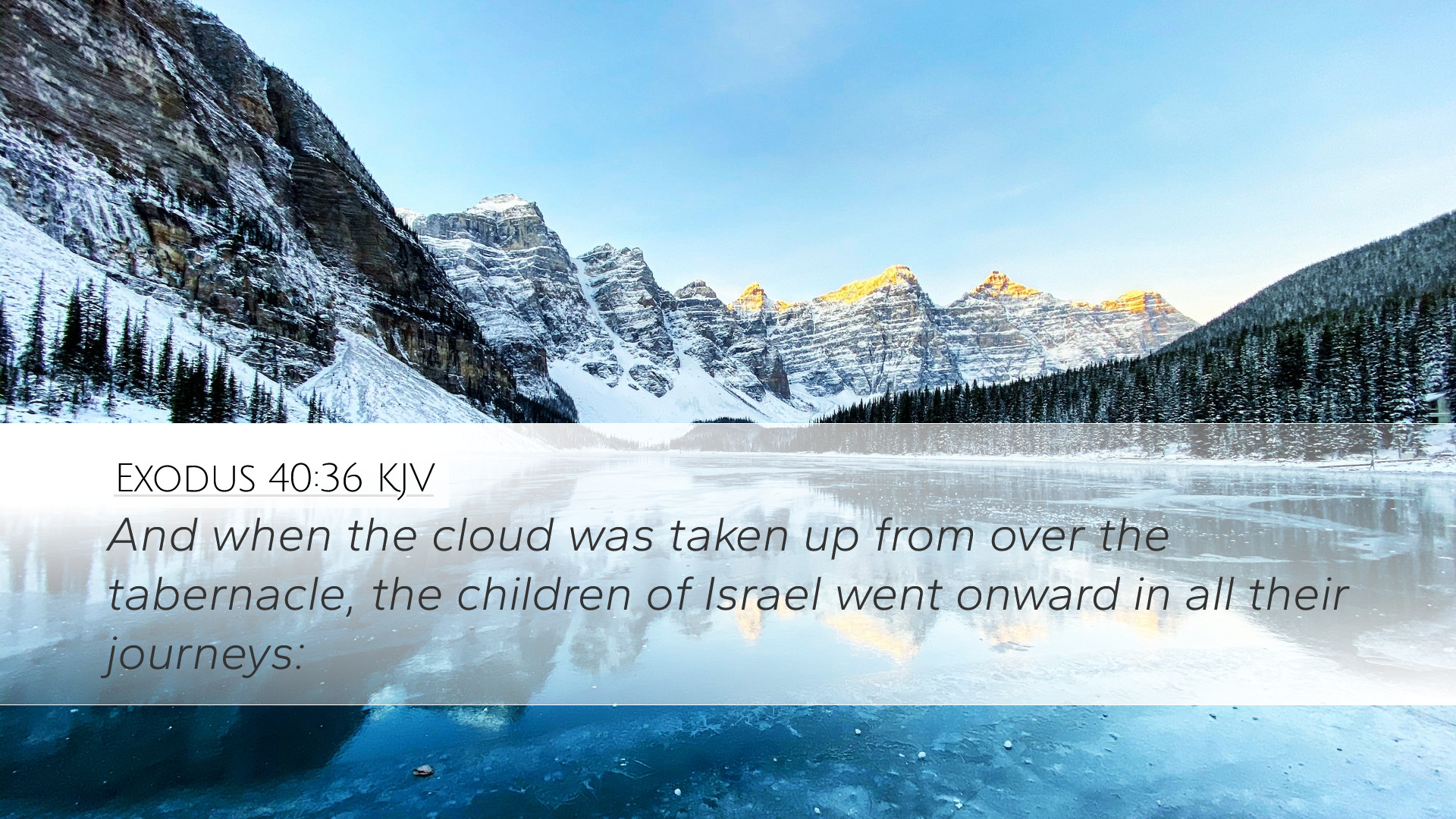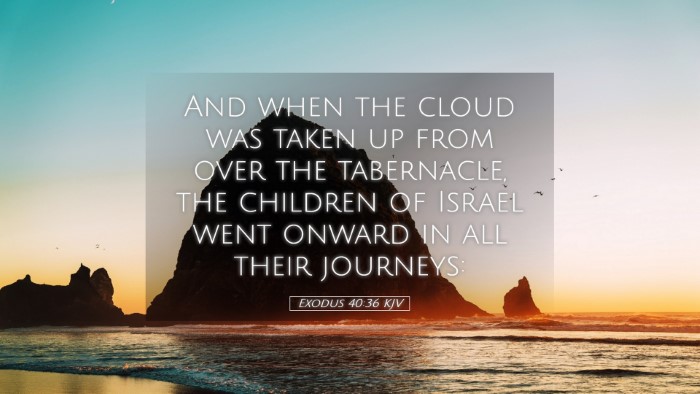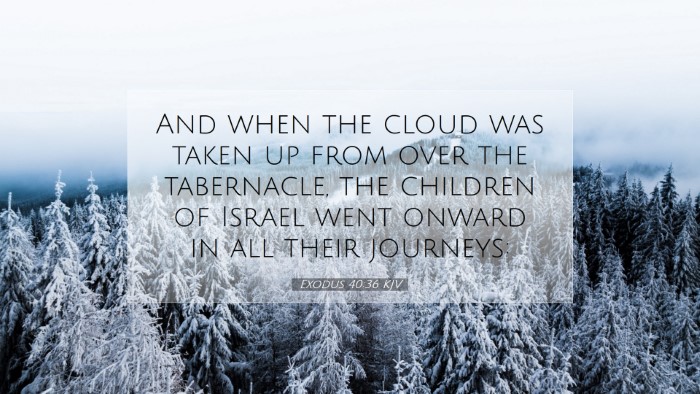Commentary on Exodus 40:36
Verse Context: Exodus 40:36 states: "And when the cloud was taken up from over the tabernacle, the children of Israel went onward in all their journeys." This verse concludes the description of the construction of the Tabernacle, signifying God’s presence and guidance among His people as they journeyed through the wilderness.
Overview
This verse serves as a powerful testament to God’s tangible presence in the lives of the Israelites. The cloud of God, which represents His glory, dictated the movements of the people. In biblical interpretation, the cloud symbolizes the divine presence that is both majestic and guiding. The following commentary will explore various themes that arise from this significant verse, considering insights from Matthew Henry, Albert Barnes, and Adam Clarke.
Insights from Matthew Henry
Matthew Henry emphasizes the importance of divine guidance in the lives of believers. He points out that the cloud’s movement signified not only the acceptance of the Tabernacle but also the continuous leadership of God among His people. When the cloud was taken up, it was an unmistakable cue for the Israelites to follow. Henry remarks:
“The movements of the cloud are tokens to us of the constant vigil and guidance Christ provides. Just as the Israelites required to rely on God’s direction for every step of their journey, so too must we seek the Lord in our daily lives.”
Henry’s commentary reflects on the idea that each journey taken by the Israelites was not without purpose. The text communicates that God's guidance requires attentive obedience and trust in His divine timing.
Insights from Albert Barnes
Albert Barnes provides a detailed historical account of the Israelites' journey and the significance of the cloud as a guiding force. He notes that this cloud, often appearing as a pillar of smoke or fire, was God's visible manifestation. Barnes illustrates the direct correlation between obeying divine instruction and the successful journey of the Israelites:
“Wherever the cloud of the Lord moved, the people followed. This obedience to the movement of the cloud was a significant part of their faith.”
He underscores that the departure of the cloud was an indication not merely of movement but of a divine decree influencing the course of their journey. This emphasizes God’s sovereignty as an active participant in the life and mission of His people.
Insights from Adam Clarke
Adam Clarke highlights the theological implications of the cloud as a means of divine communication. Clarke explains that every action taken by the Israelites was a direct response to God’s directive, showcased through the cloud that led them:
“This cloud was a token of God’s presence, indicating approval of the work of the Tabernacle. Its movement represented a continued divine involvement in the affairs of Israel, teaching them dependence on God.”
Clarke connects this theme with the broader biblical narrative, suggesting that such reliance on God's presence is foundational for spiritual growth and community life. His analysis rightly suggests that following God requires discipline, patience, and faith.
Theological Implications
The implications of Exodus 40:36 extend beyond the historical setting of the Israelites. In contemporary faith, the Church seeks to understand the ways in which God continues to lead His people. The cloud as a sign of God’s presence signifies that believers are called to be attentive to the leading of the Holy Spirit in their lives. This guidance can take many forms, including:
- Prayer: Engaging in prayer as a means of seeking God’s will.
- Scripture: Reading and interpreting the Bible for divine direction.
- Community: Listening to the insights of fellow believers as a collective move towards understanding God’s purposes.
Moreover, the departure of the cloud indicates a movement toward faithfulness in obedience. Just as the Israelites had to be ready and prepared to follow, so too should modern believers embody a readiness to respond to God’s call in their lives. It fosters a relationship characterized by dynamic engagement rather than passive existence.
Conclusion
Exodus 40:36 is more than a historical account; it is a profound picture of how God engages with His people and leads them. The insights from Matthew Henry, Albert Barnes, and Adam Clarke provide a rich commentary on the necessity of recognizing and responding to divine guidance. The text encourages believers to maintain vigilance and readiness to follow God’s lead, entrusting in His wisdom and timing.
In times of uncertainty, the Israelites’ experience with the cloud serves as a reminder that our journey, reflected through prayerful dependency on God, is illuminated through His guidance, just as it was for the children of Israel during their sojourn in the wilderness.


